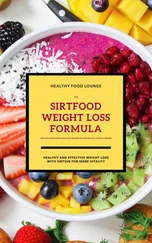Changes in bowel habits during menstruation are reported by many women (34 percent in one study), and the symptoms are cyclical in almost 30 percent of women. At the time of menses, gastrointestinal complaints that women report are increased gas (14 percent), increased diarrhea (19 percent), and increased (11 percent) and decreased (16 percent) constipation.
One big tip—get enough calcium! A calcium supplement with vitamin D helps ease some symptoms of PMS. If you’re between the ages of eighteen and fifty, you need at least 1000 mg of calcium per day. If you’re older than fifty, you need 1200 mg. Eat plenty of fruits and vegetables, and get enough whole grains. Avoid alcohol and caffeine. They’ll exacerbate your troubles.
For the bloating, try enteric-coated peppermint capsules before meals, although if they cause heartburn, you should stop. Loperamide (Imodium, one half to two tablets) could help treat or prevent the diarrhea, though too much can cause constipation. Pepto-Bismol is also worth a try—two tablespoons or tablets up to four times per day. Remember your stool and tongue may turn dark or even black after using it, but this is a harmless side effect.
I’m going to have a hysterectomy, and I’m worried that it might affect my bowels. I am already somewhat constipated. Will I get worse?
Probably not. Chronic constipation after a hysterectomy, unless it is an extensive operation for cancer, is not common. One study reported less frequent bowel movements, more laxative use, harder stools and constipation after hysterectomy, but this was not statistically more significant than in women who have not had hysterectomies. In more recent studies, no increase in constipation occurred in women without GI symptoms who underwent a hysterectomy. Furthermore no increase of IBS occurred after a hysterectomy in women without GI symptoms before surgery. Overall, movement of the stool through the colon does not change as a woman gets older, but the signal to let you know the stool is waiting to come out does decrease with age, unfortunately.
Can endometriosis come back?
Unfortunately, the likelihood that endometriosis will return is high. Five years after a patient has stopped medications to treat endometriosis, the recurrence rate is over 20 percent. Endometriosis and the pain associated with it can even recur after a successful ablation (cautery) or hysterectomy. The recurrence rate after surgery is higher when the ovaries (even one) are left or the endometriosis was severe, in which case it recurs in 30 to 47 percent of women. Of over eleven hundred women who had endometriosis diagnosed by surgery and who responded to a 1998 Endometriosis Association survey, 42 percent underwent surgical procedures for endometriosis at least three times.
You always have to be aware that recurrence is a potential problem. A cure of the endometriosis can only be assured if all estrogen, which can stimulate the endometriosis, has been removed. This occurs if a woman has both of her ovaries removed or goes through menopause. However, if one ovary is left behind after endometriosis surgery to prevent a woman from getting hot flashes or other symptoms related to menopause, the endometriosis can continue to be stimulated.
This problem often goes unrecognized. Women are told that they had a hysterectomy and that should “cure” the endometriosis. Not always! They don’t know that a hysterectomy can involve removing only the uterus or removing the uterus with one or both ovaries. If you switch to a new physician, it’s important for him or her to know right away what kind of hysterectomy was performed.
One such blunder happened with Susan, a forty-one-year-old woman who came to me with abdominal pain and diarrhea. Susan was a tough lady: a survivor of child abuse, she acted largely as a single mother to her handicapped son and her daughter while her husband traveled on business. She also worked full-time in a doctor’s office. An avid athlete, she’d begun to curtail her activities because of her bowel problems, and her weight was fluctuating wildly. “I’m no use to anyone,” she cried on our first meeting. “I feel like I’m in the twilight zone.”
She was referred to me for a second opinion regarding her diagnosis of Crohn’s disease. (Crohn’s disease is a chronic inflammatory bowel disease. Crohn’s can affect any part of the GI tract, and symptoms vary by patient depending on where the inflammation occurs. Symptoms can include constipation, diarrhea, abdominal pain, vomiting, weight loss or weight gain, and gastrointestinal bleeding.)
When I met Susan, she was clearly at a low: She’d have just a sip of water, then suffer diarrhea. She was having six to ten yellow, watery bowel movements every day, in spite of taking Imodium daily. Plus, she often woke up with fevers, which caused headaches and confusion. She was still able to work as an office manager at the doctor’s office, but her weekends were consumed with sleep. Her eyes were inflamed, and her back was afflicted with arthritis. She also had hip, neck and leg pain, as well as sores in her mouth and a sore on her neck.
Susan had developed abdominal pain, rectal pressure and cysts in one of her ovaries after a hysterectomy for endometriosis a few years prior. She was treated with a large amount of Anaprox (a nonsteroidal anti-inflammatory drug like aspirin) for pain. She tried to tell doctors that the rectal pain reminded her of how she felt before her hysterectomy, but they brushed it off.
Shortly thereafter, Susan began to experience bloody diarrhea. She was admitted to her local hospital. A colonoscopy showed inflammation in her rectum at the end of her colon, and she was told that she had ulcerative colitis. She was treated with a steroid, prednisone, which has many possible side effects, such as diabetes, acne, and weight gain with short-term usage and bone loss and cataracts with long-term usage. Susan’s symptom complex of abdominal pain, rectal pressure or pain and frequent stools occurred almost monthly. She was taking up to nine medications per day and still having a minimum of six bowel movements every day, too. She was also seeing an array of doctors, including a rheumatologist and an ophthalmologist, for side effects brought on by the steroids. Her weight was also fluctuating between 110 pounds (without steroids) and 150 pounds (with steroids). The steroid was eventually tapered down and stopped, and Susan was changed to a nonsteroid compound. She did well for a while, until she developed diarrhea, a whopping twenty-five times per day. She was treated with steroids yet again, despite the fact that she didn’t even have colitis and had experienced side effects previously.
“I now have eye inflammation, arthritis and decreased calcium in my bones,” she told me at our meeting. “Both specialists, a rheumatologist and an ophthalmologist, say it’s from all the steroids and various other drugs. I am seeing a total of six doctors! Why can’t I get better? The steroids are killing me. Still, I take them, then taper. My weight is going up and down. My old GI doctor is insisting that I have to comply and take the drugs. I tried to ask if it was endometriosis, but he’s insisting it isn’t.”
Susan was somewhat lucky; thanks to her medical background, she knew what kinds of questions to ask. Still, she was seeing so many doctors and taking so many different medications that it was tough to get a clear picture of what was going on. And her doctor had overlooked the strong possibility of endometriosis, which I began to suspect.
I carefully considered her family history: a mother with breast cancer; two aunts with endometriosis, breast cancer, colon cancer and ovarian cancer; another with uterine cancer. Susan also had six older brothers, one of whom had Crohn’s disease and another who had adult-onset diabetes mellitus and obesity. Susan herself had suffered from irritable bowel syndrome as a teenager.
Читать дальше












